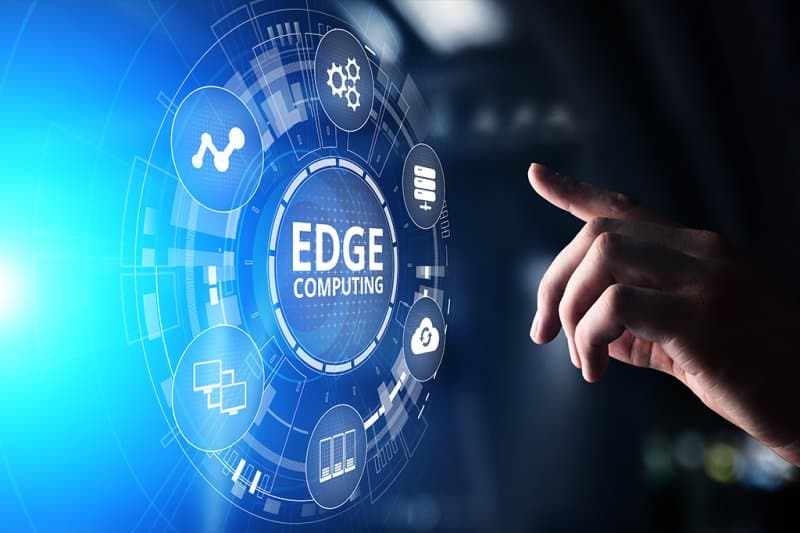Edge computing is generally described as an emerging distributed computing paradigm that focuses on bringing computing and storage closer to the actual source of data generation.
But how does edge computing relate to Linux? What are some examples of Linux being used in edge computing? Let’s look into this.
Benefits of Using Linux in Edge Computing
As noted above, edge computing involves processing data close to its source. In contrast, traditional cloud computing typically centralizes such processes in data centers scattered around the world. By being close to the data source, edge computing can minimize latency, improve real-time processing, and improve overall system efficiency.
Linux is a versatile and reliable operating system that is ideal for edge computing. Open source code combined with other characteristics such as adaptability, scalability and security make Linux an excellent candidate for edge computing OS.
1. Flexibility and customization
The open source nature of the Linux kernel allows developers to tailor the OS to the specific requirements of edge computing. Linux’s flexibility is useful in edge computing applications where the devices used vary greatly in processor power, memory, and storage.
2. Scalability
Edge computing environments often consist of different devices with different computing capabilities. Linux’s scalability and adaptability make it an excellent choice for such environments, allowing it to work with a wide variety of devices.
3. Security
Security is always a priority for edge computing, especially with the rise of Internet of Things (IoT) devices. Linux’s robust security features, as well as a global community of developers who fix vulnerabilities, make Linux a safe choice for edge computing applications.
4. Real-time capabilities
Edge computing systems, especially those using IoT, require real-time data processing for timely decision making. Recent advancements in the real-time processing capabilities of the Linux kernel, such as the PREEMPT_RT patch, aim to reduce latency and increase predictability by ensuring limited response time to external events.
5. Cost-effectiveness
Linux’s open source code, as well as the general availability of the kernel to developers, help make the OS cost-effective. This becomes especially important when deploying large-scale computing systems at the edge. Linux offers a cost-effective solution that is optimized for performance and security.
Linux Deployment Challenges for Edge Computing
Despite all the benefits of using Linux for edge computing, organizations must consider some limitations and challenges.
1. Resource limitations
Peripherals often operate in resource-constrained environments. While Linux’s scalability is an advantage, it is important to strike a balance between functionality and resource usage. Careful optimization is required to ensure efficient use of limited resources.
2. Mix of peripherals
There are a huge number of peripheral devices, ranging from sensors and actuators to gateways and edge servers. This diversity can pose a challenge from a maintenance and optimization perspective. Working with different architectures and hardware configurations is a time-consuming process that requires constant effort.
3. Security issues
Decentralization is a common feature of edge computing systems, where there are many devices, each with unique vulnerabilities. Regularly patching and updating these devices can be complex and also difficult to keep track of. Organizations must be vigilant about the security of edge computing systems.
4. Complexity of integration
Integrating different devices into a complete system is a complex task. Developers must understand all the intricacies to ensure compatibility between devices running Linux and other OSes.
Key use cases: Where Linux comes into its own in edge computing
Here are some examples of how Linux can be invaluable in edge computing environments.
Industrial IoT (IIoT)
In industrial settings, Linux-based peripherals can efficiently process data from sensors, actuators, and programmable logic controllers. This improves real-time decision making, operational efficiency and security in the rapidly evolving IIoT landscape.
Smart cities
Linux plays an important role in smart cities, contributing to systems ranging from traffic control to waste management. Linux-based edge devices that process data locally are behind some of the most important systems in smart cities such as Singapore, London, Hong Kong, Amsterdam, New York, Copenhagen, Seoul, Barcelona and Oslo.
Healthcare
Real-time data processing is critical to medicine and healthcare. Linux-based peripherals can help with patient monitoring, predictive maintenance of medical equipment, and protecting sensitive patient data.
Retail
Using Linux in edge computing can improve inventory management, create personalized customer experiences, and provide real-time insights into consumer behavior. This can help improve overall operational efficiency and tailor the shopping experience.
Autonomous vehicles
Edge computing with Linux allows autonomous vehicles to make fast, accurate decisions based on real-time data, reducing the latency typically associated with cloud computing. This allows for precise navigation, obstacle detection and traffic management. Communication between autonomous vehicles improves safety in scenarios such as convoy traffic.
Agriculture
Linux-based edge computing can help in precision agriculture by monitoring soil quality, weather conditions and crop health in real time. This data-driven approach will help farmers make informed decisions, optimize resource use and ultimately improve yields.
The landscape of the future: Linux, edge computing and more
As technology advances, Linux and edge computing will become an integral part of various fields. Linux’s open source nature automatically promotes collaboration and suits the distributed nature of edge computing. Constant collaboration among developers around the world ensures continuous evolution, allowing Linux to adapt to dynamic changes in edge computing.
Emerging Technologies
Combining Linux with technologies like 5G, for example, will further expand the capabilities of edge computing. The increased throughput and reduced latency offered by 5G will enable edge computing devices to solve more complex problems, opening up new possibilities for the future.
Edge AI and machine learning
Integrating artificial intelligence and machine learning with edge computing is another place where Linux shines. Edge computing systems that host lightweight AI and ML models can make smarter decisions with lower latency, eliminating dependence on centralized cloud servers for such operations and data processing.
Security Innovation
Linux remains resilient in the face of growing global threats. Miter Corporation, under the name MITER ATT&CK, monitors at least 94 different advanced targeted attack (APT) groups around the world. Linux IoT devices are already a target for APT groups and malware operators, and there will undoubtedly be APT groups specializing in edge computing systems, especially those already targeting industrial control systems. Continued security innovation is important to protect these evolving technologies.
Main conclusions
Linux has proven itself well in peripheral computing systems. In such systems, data can be analyzed close to the source, reducing latency and improving real-time processing capabilities. Open source Linux provides many benefits, but also poses challenges.





